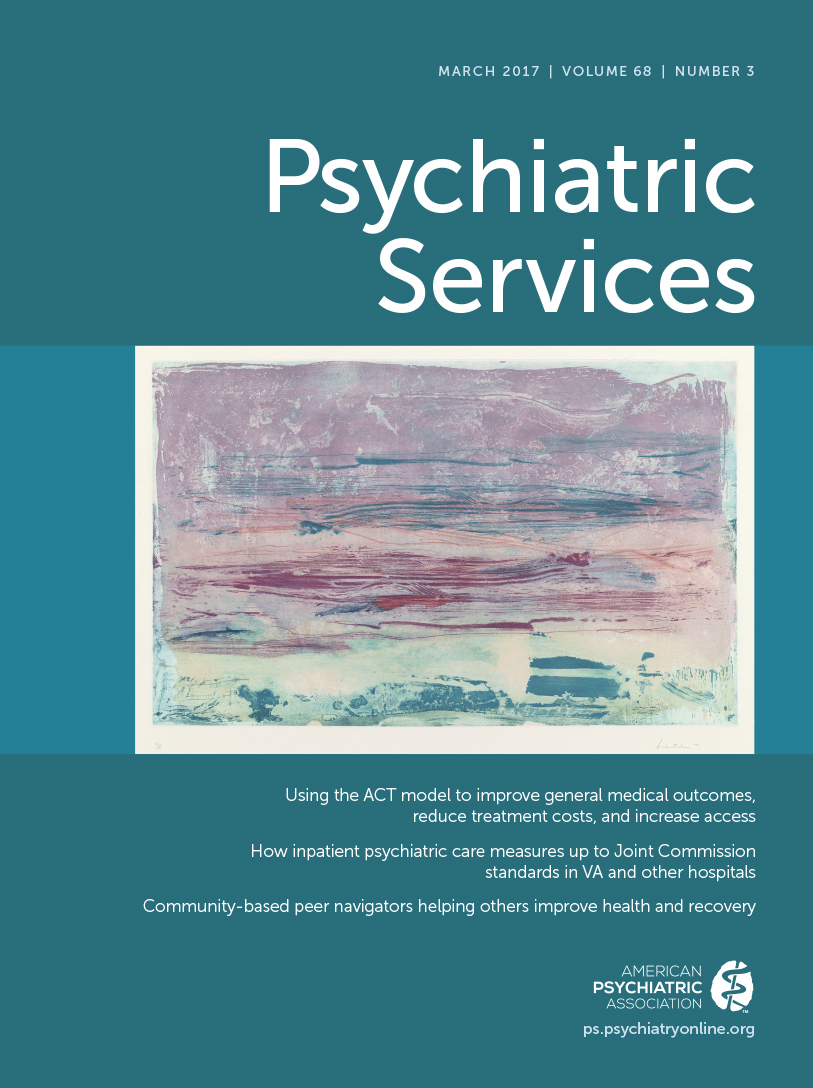Measuring the Quality of VA Care: In Reply
IN REPLY: In response to Drs. Carroll and Kudler, we are pleased to know that the U.S. Department of Veterans Affairs (VA) has taken seriously the potentially concerning results of our analysis of the Joint Commission (TJC) inpatient psychiatric quality data.
Drs. Carroll and Kudler claim that the unique integration of the VA explains poor performance on TJC measures and that this performance does not reflect actual quality of care. They assert that internal referrals and annual screenings for trauma and alcohol use negate the necessity for admission screenings for inpatient psychiatric care and that continuing care plans are not needed given use of electronic health records (EHRs).
We acknowledge that VA facilities differ from many other types of hospitals providing inpatient psychiatric care in their ability to track patients more continuously before and after admission. It is not clear, however, that annual screenings are substitutes for screening on admission, because risk factors may change over the course of the year. For the safety of everyone, the inpatient facility needs to know whether there is violence risk and substances within the patient’s system that might interact with medicines or restraint and whether withdrawal might occur.
Further, inpatient psychiatric facilities should create a continuing care plan that is transmitted to the internal outpatient clinic if that is where the client is to be connected on hospital discharge. Although the VA’s method of transmission will differ from that for nonintegrated systems (such as having internal health records versus faxing), it is not clear to us why the VA hospitals could not document transmission in a way that satisfies performance on the measure.
TJC’s requirement that the VA report on these measures suggests that decision makers see value in such measurement and benchmarking. Moreover, if the structure of the VA alone explained poor performance, such that some of the measured activities simply do not occur, then we would have seen much less variability in performance across VA hospitals. It could be that lack of standardized protocols and unreliable data reporting were more severe among the VA hospitals relative to other hospitals. If true, then improvements in documentation and reporting may be needed to ensure that such reporting supports the goals of quality improvement and accountability for inpatient psychiatric facilities.
In regard to the other measures (restraint, seclusion, and receipt of and justification for multiple antipsychotics at discharge), an integrated system and use of EHRs cannot explain poor performance. Responses from VA employees suggest that differences in case mix might explain low performance, noting that veterans are a unique population with higher prevalence of distinct conditions such as traumatic brain injury. We know of no evidence, however, to suggest that such case-mix differences explain or justify worse performance in these clinical process measures.



